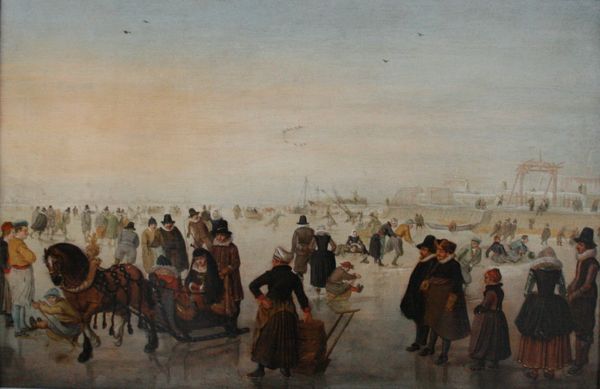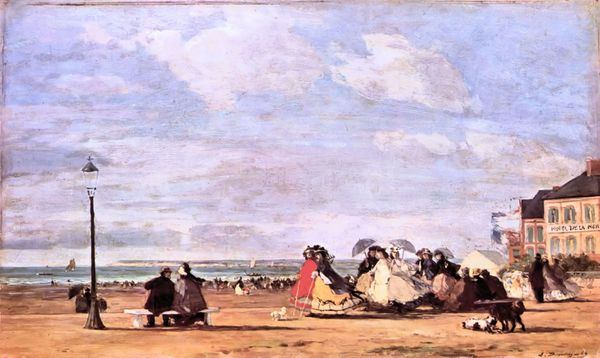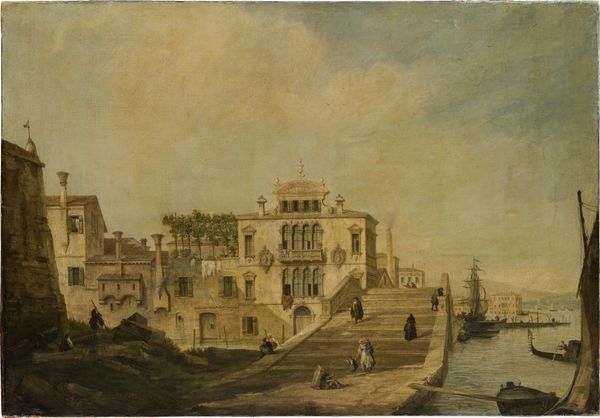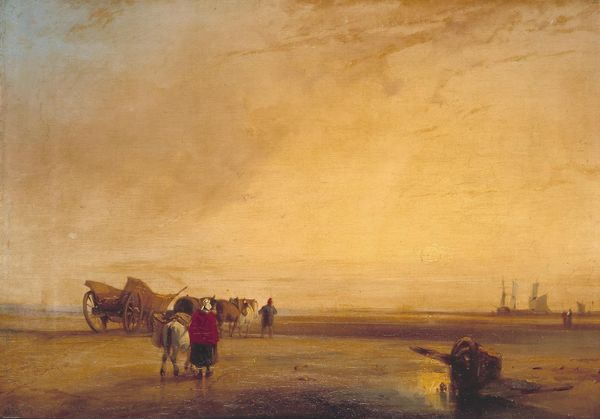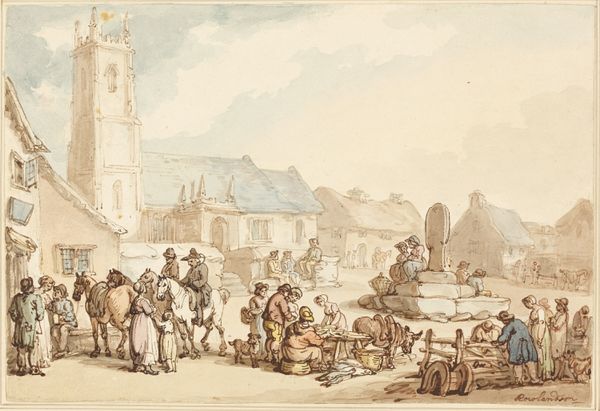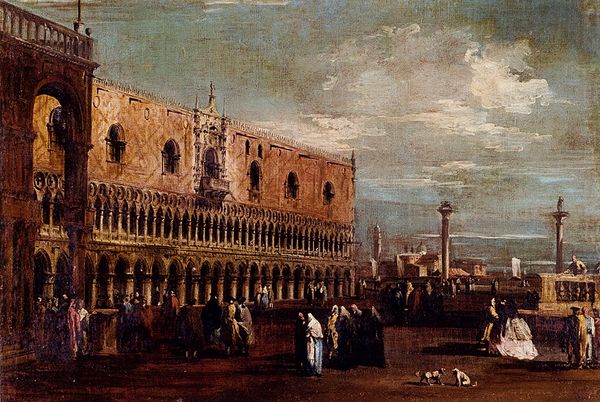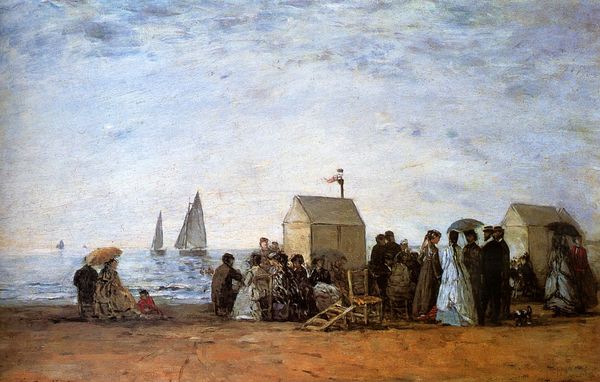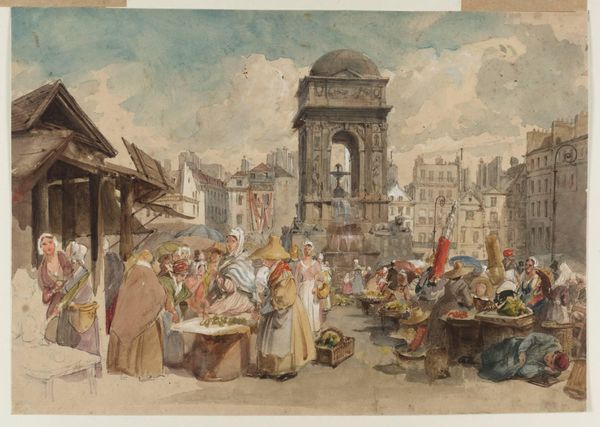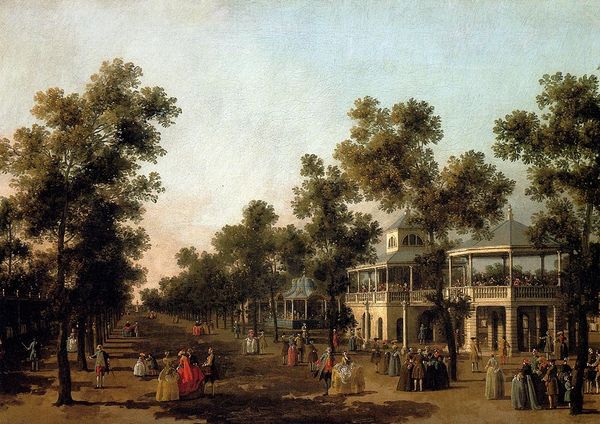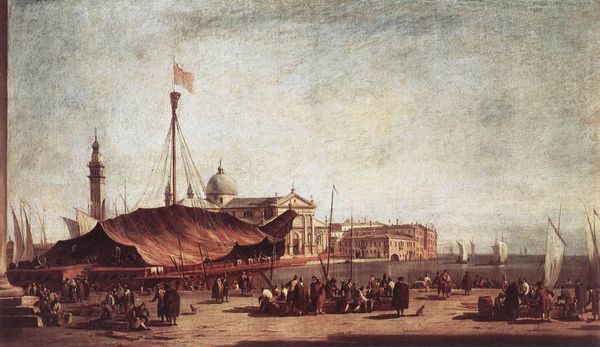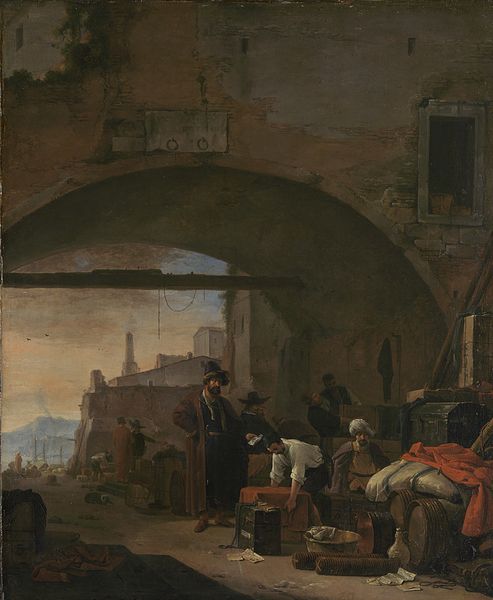
Copyright: Public domain
Curator: This oil on canvas work is Giovanni Domenico Tiepolo's "The New World, from the 'Foresteria' (Guesthouse)," dating to 1757. Its palette feels muted and contemplative. The composition seems a bit chaotic, perhaps deliberately so. Editor: Indeed. One feels the oppressive weight of the crowd, tightly packed and facing an unseen spectacle. Are we meant to perceive it as awe or perhaps a kind of anxious expectation? Curator: Notice how Tiepolo uses subtle gradations of light to sculpt the figures. The composition's structural rhythm emphasizes their gestures. Semiotically, the recurring motif of masks becomes particularly intriguing, as these might symbolize deception, anonymity, or the blurring of social boundaries. Editor: The masks speak volumes about the era's anxieties around identity. What "new world" are they watching? Is it genuine progress or just another performance of power by the elite? And the elevated figure standing on the box feels especially performative. Is it a lecturer, a magician, or just another purveyor of dreams? Curator: Dreams, precisely! Tiepolo orchestrates spatial relationships masterfully. The linear perspective draws us into the painting's depth, yet our journey halts at the ambiguous ocean horizon line. The foreground figures, sharply rendered, create a counterpoint to the subtly blurred backdrop. This heightens the experience, doesn't it? Editor: Yes, but who is this artwork speaking to? Tiepolo seems to address the viewer from a detached viewpoint. This perspective allows him to engage critically with societal shifts of the 1700s, where the rise of empiricism was altering worldviews. He implicates us in this social drama and the era's shifting realities. Curator: Thank you. I’m more acutely aware of Tiepolo’s structural dexterity now. Editor: And I appreciate how it encouraged an awareness of historical anxieties!
Comments
No comments
Be the first to comment and join the conversation on the ultimate creative platform.
